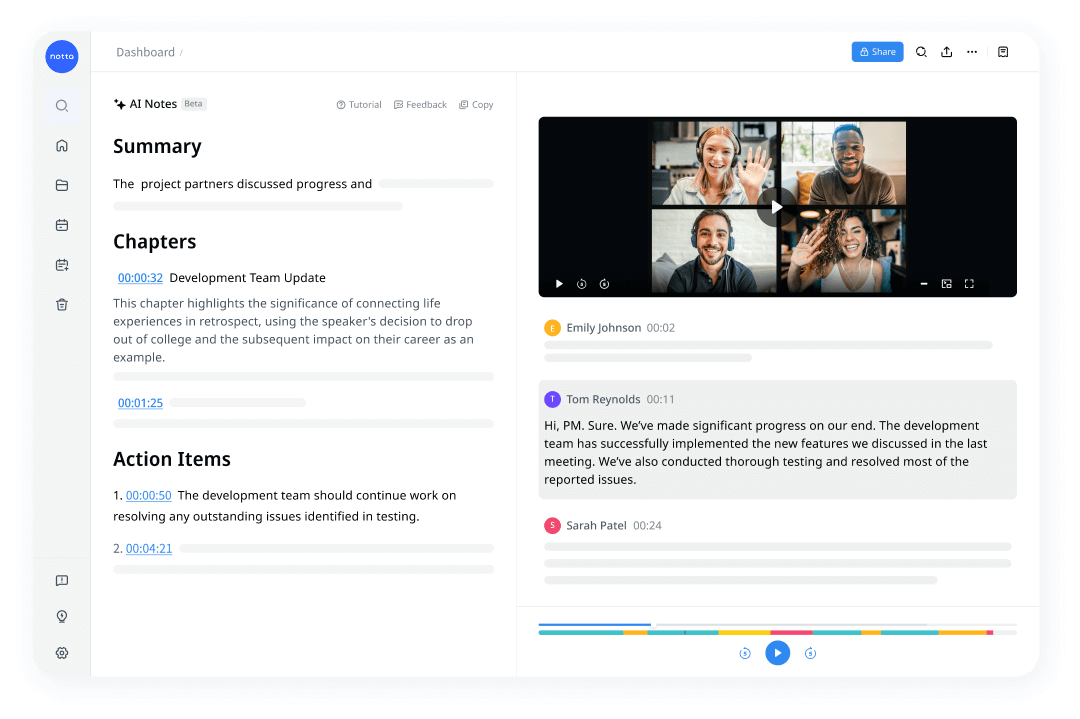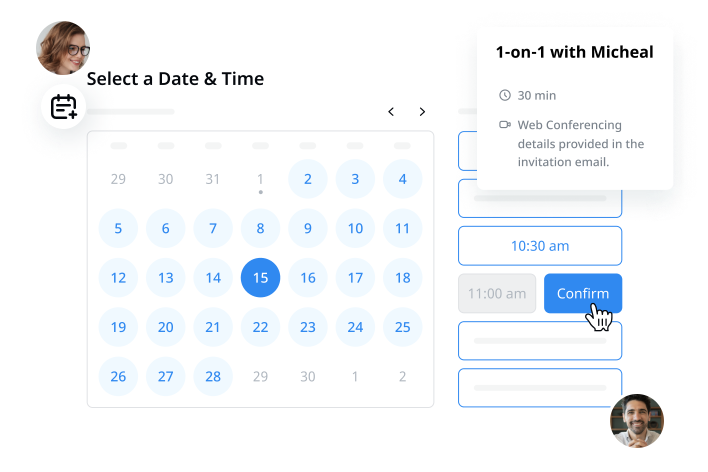Many people consider meetings as a major time trap — in fact, 71% of managers and employees feel meetings are a waste of time. To be honest, I don't think all meetings are useless. While I agree that some of the virtual sessions can be avoided, there are many gatherings, like executive meetings, that are important for overall business growth and success.
All the high-level executives in the company come together to attend the executive meeting and focus on what matters the most: future business plans, critical issues, and making decisions. So, it becomes more important to create a meeting agenda that covers pressing topics from every corner of the business. In this article, I'll reveal what executive meetings are, what should be discussed during these sessions, and how to plan them.
What is an executive team meeting?
An executive team meeting is a gathering where high-level executives and members of the leadership team come together to discuss the internal structure of the business, make decisions, and discuss department goals. In other words, the basic agenda behind every executive meeting is to discuss ideas, find solutions, and execute them. Let's explain them briefly:
Discuss ideas: Such meetings typically start with giving updates regarding how each department is performing. You can also highlight the goals of each department so everyone remains in the loop.
Find solutions: If there's one thing that executive teams majorly focus on, it's finding solutions for current and future challenges.
Execute: Once the team has discussed everything, their duty is to make sure the plans are executed as discussed.
What should be discussed at executive meetings?
Before you schedule a team meeting with high-level executives, you want to be sure you know what should be discussed during such gatherings. I recommend finding one person from the senior leadership team who can give you the context you need and key discussion points. Of course, the meeting roadmap will be different depending on the discussion points and what you want to achieve, but here are a few common things you can include:
Objectives: You should start planning for the executive meetings by identifying the key objectives that you would like to discuss during the meeting. If you're unsure, you can ask the senior leadership team to outline a few objectives that are worthy of discussion.
Company wins: Your senior management deserves to know how the employees are performing and what they have achieved so far. When you appreciate team members for their hard work, it helps them know their efforts don't go unnoticed.
Any updates: It's your duty to help senior members know about important updates and decisions. You can share positive news so everyone in the team (senior management, colleagues, and employees) feels motivated.
Metrics: You'll need to keep tracking and measuring the performance of the company through metrics or OKRs. This will help everyone know what's working and what's not.
Roadblocks: The senior executive team gathering is not only about sharing positive news or updates. In fact, one of their main goals is to identify roadblocks and how the company can address them.
Create a list of action items: At the end, don't forget to create a list of action items and send the summary to all the attendees. It should mainly cover the next steps!

Never miss a detail again
Transcribe meetings, summarize important details and automate scheduling with Notta.
How to plan an executive team meeting?
Taking the lead in meetings with high-level executives needs proper structure and planning. You'll need to make sure everything important is covered — and, that too, without wasting the time of attendees. Here are a few things that'll help you efficiently plan a team meeting with all the executive members.
1. Always start with a check-in
If you're hosting the executive team meeting for the first time, it's better to start with a check-in. This way, you give an opportunity to each attendee so they can share what’s going on in their mind and better focus on the meeting discussion.
2. Take it online
You'll want to invite as many executives as possible — and because of the accessibility of online meetings, it's a great idea to run them online. You can schedule meetings on any video conferencing platform, like Zoom, Microsoft Teams, Webex, or Google Meet.

3. Allocate time for specific tasks
Since you will be discussing many important topics in the meeting, it's a wise idea to allocate time for specific tasks. For example, let's say the CEO of the company will discuss updates or FYIs in the first 15 minutes. Then, you can keep 10 - 40 minutes to identify the top objectives or issues everyone is planning to address during the meeting.
4. Send out feedback forms
If you want to understand how effective the executive team meeting was, consider sending feedback forms that take no longer than 2 minutes to fill out. Also, act on the received feedback! Executive meetings just require a little more thoughtful communication, and feedback can help you ensure everything runs smoothly.
Executive meeting agenda templates
Now that you've got an idea of how to plan an executive team meeting, it's time to start preparing the meeting agenda. For such an important meeting — one that could be the reason for business growth — I suggest checking out some of the executive meeting agenda templates here.
Title: Executive Meeting Agenda Template
Date: May 10, 2024
Time: 10:00 AM - 11: 00 AM
Location: Microsoft Teams
Attendees: [Here you can mention the name/email address of the attendees]
Share the company's wins
The executive meeting should kick off with some motivation. I'd recommend starting the meeting by sharing some of the company's wins in different departments. For example, you can write, ‘The marketing team has successfully launched a campaign that hit 3 million views on social media channels.’
Any updates & FYIs
Here, you can talk about the updates, important decisions, and crucial information that the senior management members should be aware of.
Metrics / OKR Progress
Just like sharing the team's wins, you can also share the kind of metric and other advancements with the executive meeting.
Roadblocks
You just can't miss discussing the challenges and roadblocks that the team might be facing. With top leaders present in the room, it's a time to openly call out issues and make strategic decisions.
Action items
You'll need to track the action items and assign each task to a specific individual. For example, what are the things that the senior leadership team is planning to do between now and the next meeting?
Tips to run effective executive team meetings
I know from experience that it can be pretty challenging to host an effective executive team meeting. Instead of simply creating and sending a meeting link, there's a lot that you need to take care of. Here, I'll walk you through some tips that make sure things run smoothly.
1. Schedule the meeting
You don't have to invite everyone in the organization when scheduling the executive session. Ideally, you'll invite the CFO, COO, CEO, and board members to make important business-related decisions.
Then, find a time that works for everyone for all the high-level executives. I often use Google Calendar to do this — because of its integration with Notta. With just a few clicks, Notta helps you schedule meetings and share the booking link with attendees.

2. Share the agenda in advance
Everyone is busy, so it's better to create a team meeting agenda and share it with the attendees. It's like a detailed document that covers everything that will be discussed during the team meeting. You can also share some important resources with the attendees so they can prepare discussion points in advance.
3. Leave room for discussion
If you want to plan effective executive team meetings, it's important to LEAVE TIME FOR DISCUSSION (I'm writing this in all caps to make it clear how important this point is). I recommend allotting ⅓ or ⅔ of the meeting time for discussion. It may seem like a lot, but it really helps you clear up a lot of doubts and make important decisions.
4. Follow up after the meeting
Once the meeting is completed, you can send a follow-up message to all the attendees. You can attach the summary of the meeting in the follow-up email. Notta is an AI meeting assistant that can help you schedule, record, transcribe, and summarize executive meetings.
The Notta bot can join your online meetings and automatically generate transcripts of spoken words. Then, the AI summary feature can generate and assign action items to the attendees so nothing falls through the cracks.
Key takeaways
There's no doubt that executive meetings can set up the path to success — but they involve deeper planning. These meetings are a great way to bring all the high-level executives on the same page. If you want to save time and automate certain meeting tasks like scheduling, recording, and transcribing, you may consider AI meeting assistants like Notta.
Notta can integrate with your most-used video conferencing platforms, such as Google Meet, Zoom, Webex, or Microsoft Teams, to automate the recording and transcribing of spoken words. Then, you can use the AI summary feature to summarize the lengthy transcripts into different chapters and action items. This way, it's not just the recording that's a breeze but the entire process that follows.
Capture every detail with AI meeting notes
Notta offers the most integrated AI meeting notes, summaries, and action items so nothing gets missed.
FAQs
What are the topics for executive meetings?
There are a lot of important things that can be discussed during the executive sessions, though they may vary depending on the company's current goals and meeting objectives. Here's a list of the topics you can discuss during the meet-up:
What are the top business objectives based on weekly or monthly status update meetings?
How does the work ladder up to the goals and strategies of the company?
What project is each department working on, and what progress have they made?
Any important updates or information that can impact how the company operates?
What is the purpose of an executive meeting?
The primary goal of an executive meeting is to collaborate with company leaders to check out the progress, solve issues, and drive business growth. The discussion will help the leaders understand how well the team has performed in the past and the plans for the future to achieve the company's goals.
Who attends the executive meeting?
Executive committee or high-ranking executives, including CEO, CFO, and other top representatives, attend the executive meetings. Generally, these are private meetings with board members and do not include any staff or employees.



